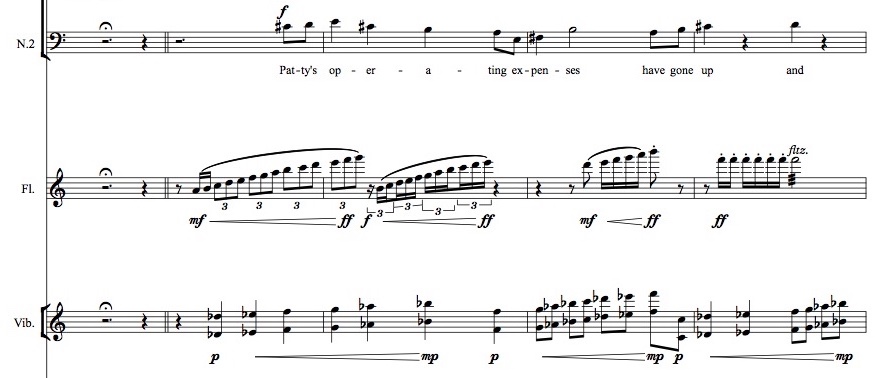Creating Satire Through Music: Cristina Lord
Cristina Lord is one of the commissioned composers for our upcoming Flash Operas Program at Symphony Space on May 5 and 6. She has written her Flash Opera based on the story ‘Pledge Drive’ by Patricia Marx. In advance of our upcoming workshop of her piece, we asked her about what she was thinking about as she worked and what kinds of challenges her story presented to her writing process. Here are some of her thoughts…
EiO: While you wrote your libretto, were you also imagining the music? How much did this impact your finished piece?
Cristina: While I didn’t have specific music in mind, I did have a pretty firm idea regarding the emotional contour. I let the text guide me with its sarcasm, self-awareness, and wit. Given this nature, I knew I wanted something humorous with dark undertones, and ridiculous in all the right ways. This led me to write frequent shifts in the music, some more rapid than others, in an array of musical languages that culminate in something unapologetically postmodern.

Score excerpt from Cristina Lord’s ‘Pledge Drive.’
EiO: What challenges did your story present in terms of character and narrative? How did you resolve these challenges with your music?
Cristina: Pledge Drive by Patricia Marx is more akin to a portrait of a character than a traditional narrative. However, it does pose important questions about society like any good narrative should. The way I see it, there are three characters in the story: Patty, the narrator(s), and the audience. While every story has an intended audience, Pledge Drive is unique in its assertively direct attitude towards the audience.
Surprisingly, Patty isn’t involved in any direct action in the text – she is only referenced (albeit relentlessly). While translating the libretto to opera, I decided it was important to physically represent her. She is unknowingly the star of the show; she is not only the focal point of humor and sarcasm, but is also the lens for questioning societal behavior. Musically, Patty’s part is very present, but never substantive. For example, she has impressive and soaring lines, but none of them involve text that push the narrative. Also, her lines are almost always dependent on the narrator.
In order to avoid the musical and narrative stagnation that can occur with a single voice, I made the decision to have the narrator be represented by two people instead of one. This approach creates a dialogue to engage the audience. It also enables this character to be more chaotic and therefore have greater impact on the audience and Patty. Furthermore, having two narrators creates the semblance of a group, which is a much better representation of society than just one would be. This way, the storyline becomes a societal commentary instead of a single person’s opinion.
EiO: What big questions do you have about how the musicians will respond to the music?
Cristina: So much of the music relies on the theatrical interpretation, and so I’m hoping that my ideas and intentions will come across clearly. While I undoubtedly want the musicians and audience to have fun with the music, I also hope that it leaves them with questions and self-reflection.



